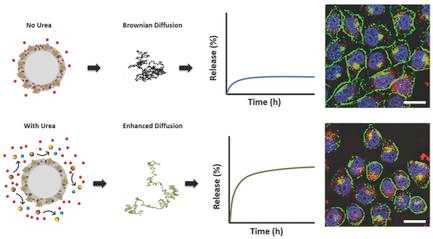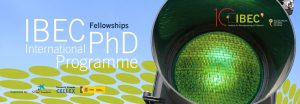BIST Collquium Series: Dr. Mircea Dincă
Teaching Sponges New Tricks: Catalysis and Charge Transport in Microporous Metal-Organic Frameworks
Teaching Sponges New Tricks: Catalysis and Charge Transport in Microporous Metal-Organic Frameworks
Teaching Sponges New Tricks: Catalysis and Charge Transport in Microporous Metal-Organic Frameworks
Leadership & management Skills for Young Scientists
Leadership & management Skills for Young Scientists
Leadership & management Skills for Young Scientists
Leadership & management Skills for Young Scientists
 Maria Valls from IBEC’s Biomimetic systems for cell engineering group has won a PIONER prize from CERCA for her doctoral thesis.
Maria Valls from IBEC’s Biomimetic systems for cell engineering group has won a PIONER prize from CERCA for her doctoral thesis.She’s the second ever IBEC winner of one of these prestigious prizes, which since their launch in 2014 have recognised theses with results that are clearly aimed at commercial exploitation.
The jury described her thesis, ‘Development of an advanced 3D culture system for human cardiac tissue engineering’, as having “a high degree of complexity and promising results, which combines different disciplines within the field of bioengineering to create a bioreactor”.
 IBEC researchers have demonstrated that their enzyme-powered nanobots show a marked improvement in drug delivery efficiency over passive ones.
IBEC researchers have demonstrated that their enzyme-powered nanobots show a marked improvement in drug delivery efficiency over passive ones.The Advanced Functional Materials paper is the result of two years of work at IBEC, where Samuel Sanchez’s group has been experimenting with enzyme catalysis to power micro- and nanomotors. By consuming biocompatible fuels, these nanoparticles can then be used for biomedical applications such as targeted drug delivery to cancer cells.
 Application Deadline: 31/01/2018
Application Deadline: 31/01/2018
The Institute for Bioengineering of Catalonia (IBEC) is looking for PhD candidates to apply for the 2018 International PhD Programme at IBEC from Severo Ochoa fellowship, and MINECO ‘Ayudas para contratos predoctorales para la formación de doctores’ fellowship. In 2018, 4 fellowships will be offered, funded by the Spanish Ministry of Economy, Industry and Competitiveness, through the ‘Ayudas para contratos predoctorales para la formación de doctores’ 2018-call. 3 additional fellowships will be funded by IBEC through the Severo Ochoa Excellence Award (IBEC Severo Ochoa Fellowship), Fundación Bancaria La Caixa and Fundación Cellex.